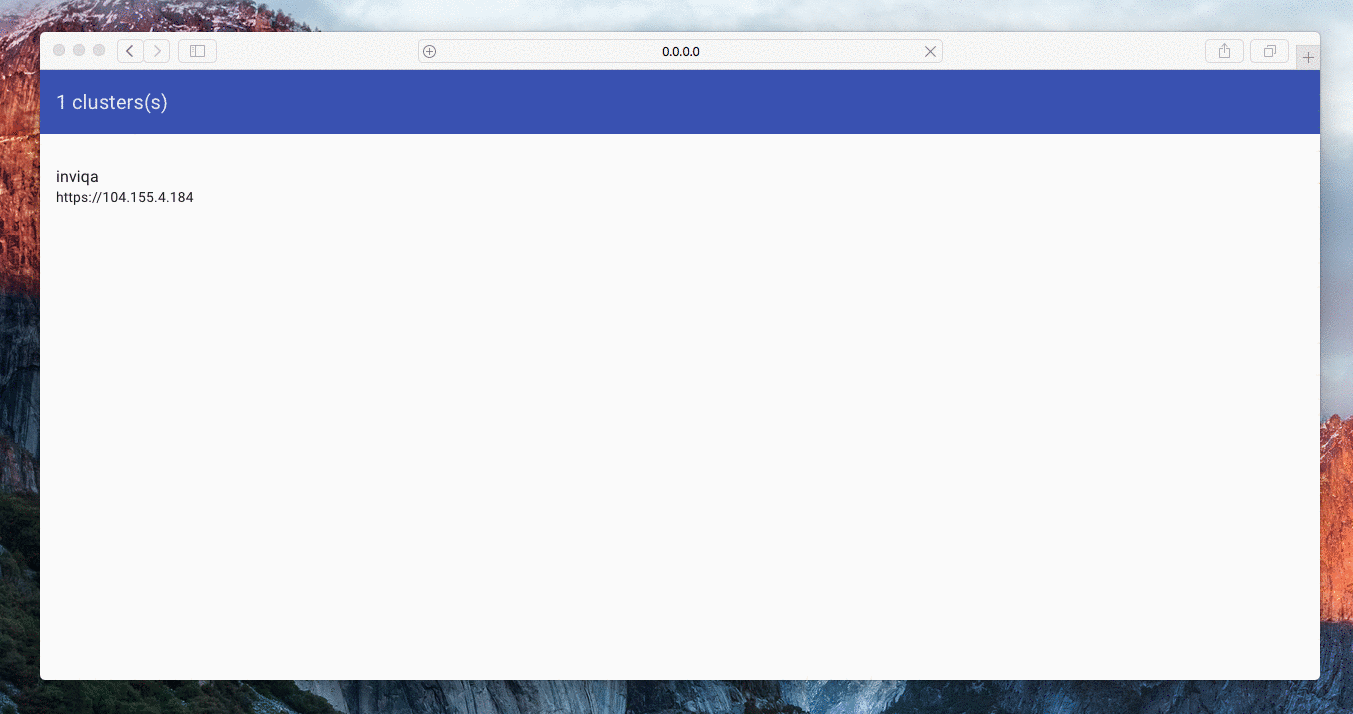This application allows to get the status of a Kubernetes cluster through a simple API endpoint, and brings a user interface with it. It will gives you both a real-time and an historical view of the status of your cluster.
kubectl -f extras/kube/deployment.yml
kubectl -f extras/kube/service.yml
The cluster provider is responsible of providing the list and credentials of the clusters to the other parts of the system. Right now the following implementations exists:
in-memory. Will provide the cluster list from an environment variable.within-k8s. Will provide the Kubernetes cluster in which kube-status is running.continuous-pipe. Will provide the Kubernetes clusters from all the clusters of all the teams you have access from ContinuousPipe.
-cluster-provider=[provider]
In order to use this provider, you will need these environment variables:
| Name | Required | Description | Example |
|---|---|---|---|
CLUSTER_LIST |
Yes | An inline JSON description of your clusters | [{"identifier":"my-cluster","address":"https://1.2.3.4","username":"-","password":"-"}] |
In order to use this provider, you will need these environment variables:
| Name | Required | Description | Example |
|---|---|---|---|
CONTINUOUS_PIPE_API_KEY |
Yes | The API key to use to call the API | ø |
The storage backends will be responsible of storing the fetched statuses. The following implementations exists:
in-memory. The status history is stored in the memory of kube-statusgoogle-cloud-datastore. Google Cloud Datastore is used as a backend.
By default the in-memory implementation is used but you can select the backend you want to use with the following flag:
-history-storage-backend=[backend]
Warning: If your kube-status process restarts, the history is erased.
It will store at maximum 720 statuses in memory.
In order to use the Google Cloud Datastore backend, you need to configure the following environment variables:
| Name | Required | Description | Example |
|---|---|---|---|
GOOGLE_CLOUD_PROJECT_ID |
Yes | Identifier of your Google Cloud project | ø |
GOOGLE_CLOUD_SERVICE_ACCOUNT |
Yes | Base64-encoded service account JSON file | ø |
Note: you'll have to have your DataStore indexes matching the ones in extras/google-cloud-datastore/indexes.yaml. Uses the gcloud datastore create-indexes [file-path] command to create these indexes.
If you want not to keep the entries for a long time, you can enable the garbage collection of history. Use the following environment variable to configure it:
| Name | Required | Description | Example |
|---|---|---|---|
ONLY_KEEP_HOURS_OF_HISTORY |
No | The number of hours you want to keep the data for each cluster | 24 for... a day ;-) |
Note: this is right now only supported by the Google Cloud Datastore storage, as the memory one as a fixed buffer size anyway.
| Name | Required | Description | Example | Default |
|---|---|---|---|---|
KUBE_STATUS_LISTEN_ADDRESS |
Yes | The to expose the API to | http://127.0.0.1:8080 |
ø |
SNAPSHOT_INTERVAL |
No | The internal, in minutes, to do the snapshots | http://127.0.0.1:8080 |
5 |
In addition to the user interface, kube-status exposes an API that you can directly communicates with.
List the clusters in your backend.
Return the live status of a cluster.
Query parameters
from: beginning of the history (RFC3339 date)to: end of the history (RFC3339 date)
Return the list of the history entries available for this cluster.
Return the snapshotted status of the given cluster for this history entry.
- Install the dependencies
make install-dep
- Run the API
CLUSTER_LIST='[{"identifier":"my-cluster","address":"https://1.2.3.4","username":"-","password":"-"}]' \
KUBE_STATUS_LISTEN_ADDRESS=http://0.0.0.0:80
go run main.go
